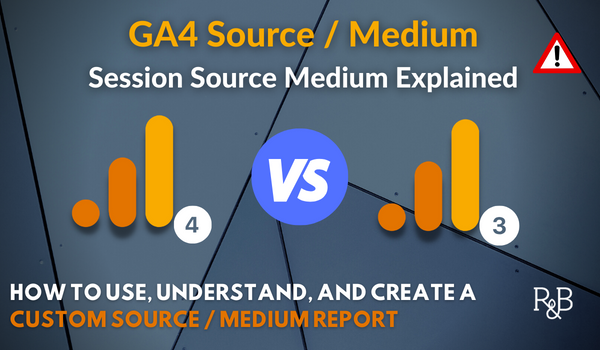Utilizing the Power of Second Measurement in Google Analytics to Refine Your Advertising And Marketing Technique and Drive Results
Leveraging the power of additional dimensions within Google Analytics opens a world of possibilities for marketing professionals looking for to acquire much deeper understandings right into individual habits and tailor their campaigns with accuracy. The potential to gauge campaign effectiveness with a granular lens even more stresses the value of using this tool to drive success.
Recognizing Additional Dimensions
When examining information in Google Analytics, comprehending secondary measurements is important for acquiring much deeper insights right into customer actions and internet site efficiency. Key dimensions give basic information such as the number of customers or sessions, yet second dimensions provide a more thorough sight by permitting individuals to segment and examine data better. By adding an additional measurement, marketing experts can improve their evaluation and discover valuable patterns that might have or else gone unnoticed.
Secondary dimensions in Google Analytics can be related to various metrics such as web traffic sources, individual demographics, and habits flow. For instance, by combining the main dimension of 'touchdown web pages' with the second measurement of 'device group,' marketing professionals can establish which gadgets are driving traffic to details landing pages. This information can assist maximize internet site layout and web content for much better customer experience throughout different tools
Studying Individual Habits Patterns
To effectively recognize customer actions patterns, an extensive evaluation of data within Google Analytics is necessary. By delving into user actions patterns, marketers can get valuable understandings right into exactly how site visitors interact with their website, which pages are most interesting, and where prospective traffic jams or drop-off factors might exist in the conversion channel. Google Analytics uses a series of tools to assess individual behavior, such as habits flow reports, event tracking, and goal funnels.
Habits circulation reports supply a graph of exactly how customers browse with the site, showing the most usual paths individuals take along with where they hand over. Event tracking enables marketers to keep track of specific interactions on the website, such as switch clicks or video clip views, providing a much deeper understanding of individual interaction. Objective funnels track the steps individuals take in the direction of finishing a details goal, highlighting areas for improvement in the conversion procedure.
Enhancing Target Market Division
Upon assessing individual actions patterns, marketers can additionally optimize their approaches by enhancing target market division techniques in Google Analytics. Target market segmentation enables the categorization of website site visitors into specific teams based on numerous qualities such as demographics, habits, and passions. By using Google Analytics' secondary dimensions, marketing experts can refine these sectors also further to gain much deeper understandings right into their target market's actions and choices.
Enhancing target market segmentation enables marketing experts to create even more targeted and customized advertising projects. By identifying unique customer teams, marketing professionals can tailor their messaging, web content, and provides to much better resonate with each sector's special features and needs. This level of customization can significantly enhance involvement, conversion prices, and overall advertising and marketing performance.
Additionally, with enhanced audience division, online marketers can better recognize the consumer journey and maximize touchpoints along the course to conversion. By evaluating just how various segments connect with the website and marketing channels, marketers can identify possibilities to improve customer experience, address discomfort factors, and eventually drive even more conversions. On the whole, refining target market segmentation in Google Analytics is an effective technique for maximizing marketing efficiency and driving lasting service development.
Tailoring Marketing Campaigns
Marketing experts can maximize their advertising and marketing projects by customizing material and messaging to suit the one-of-a-kind features and requirements of specific audience segments. By leveraging insights from second measurements in Google Analytics, marketers can get a deeper understanding of their target market's behavior, choices, and demographics.
With the analysis of additional measurements such as web traffic resources, gadgets utilized, or geographic location, online marketers can fine-tune their messaging to be a lot more appropriate and impactful. By customizing advertising projects based on insights from secondary measurements, services can maximize the effectiveness of their initiatives and eventually drive much better ROI.
Measuring Project Effectiveness

One crucial aspect of determining project performance is tracking conversions. By setting up goals in Google Analytics, businesses can keep an their website eye on details activities taken by customers as a result of the project, such as authorizing or making an acquisition up for an e-newsletter. Understanding the conversion price and the conversion course can provide important understandings into the efficiency of different advertising networks and messages.
Furthermore, analyzing metrics such as click-through prices, bounce prices, and session period can assist marketing experts evaluate customer interaction and the influence of the project on website traffic. By combining primary metrics with additional have a peek at this website measurements in Google Analytics, services can fine-tune their marketing strategies, optimize project performance, and drive much better outcomes.
Final Thought
Finally, harnessing the power of secondary dimensions in Google Analytics can offer useful understandings right into user actions patterns, boost target market division, tailor advertising campaigns, and step campaign effectiveness. By utilizing this attribute effectively, companies can refine their marketing techniques and drive far better results. It is essential for online marketers to leverage the data readily available with second dimensions to make informed choices and maximize their advocate maximum influence.
